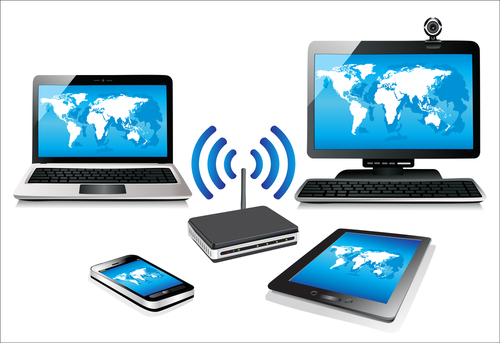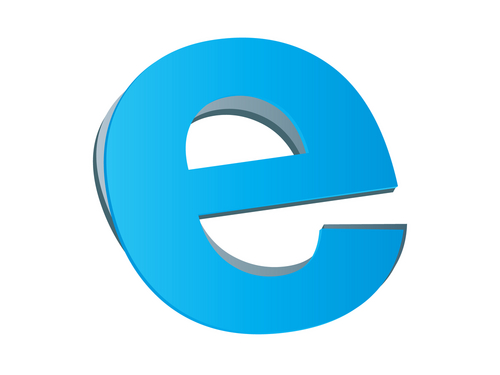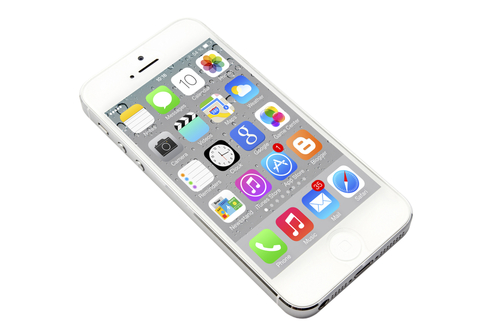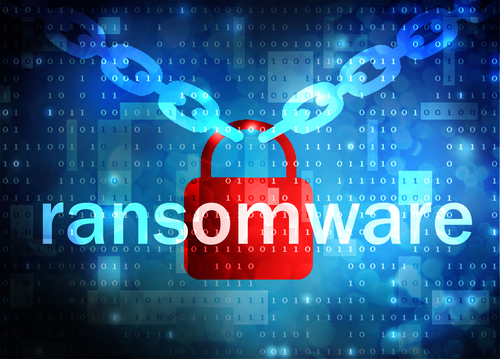April 7th, 2014

Wireless networks have come a long way in the past decade. While you enjoy speeds faster than ever and enhanced security, there’s still an ever-present threat of someone stealing WiFi. More devices connected to your network means slower connection speeds and more bandwidth being used. Andy O’Donnell of About recently explained how to tell if someone is freeloading on your wireless network.
- Check Your Router’s Admin Interface
Every router has a way to log-in and change settings. If you’re not sure how to do this, check the user guide or search for information online. Once you’ve logged in, look for a ‘wireless configuration’ page or ‘wireless status’ page. Here you’ll find a list of the devices connected to your network. In one column, you’ll see the MAC address, which can be used to determine what type of device is being used. In the next column, you’ll see the IP address. These two numbers help you tell the trusted users from the freeloaders.
Take a moment to think about every device in your home that should be connected to your network. That’s every smartphone, laptop, tablet and desktop that’s using the internet. Remember that even a video game console and some cameras might be using WiFi. Now, compare that number to the number of devices listed in the router’s admin interface. If they don’t match up, then you’ve got someone else connected that shouldn’t be. This is where the MAC addresses will come in handy. By using a MAC Vendor look-up site, you’ll be able to determine the manufacturer of each device on your network. If there’s a device found that you don’t own, you can be certain that a stranger is using your internet connection.
Having unwanted guests on your wireless network is a sign that your security isn’t tight enough. To remedy this situation, start by enabling WPA2 encryption. Then, change the network’s name and the password required to log-in. Don’t use commonly known words like the names of children or pets. Treat your WiFi password like your bank’s website password. Don’t use full words and mix in numbers and symbols.
Properly securing your wireless network not only helps keep unwanted devices from connecting to it, it also ensures that data you send through your router isn’t monitored or stolen.
For help improving the security of your home network or the one at your office, call Geek Rescue at 918-369-4335.
April 3rd, 2014

Not all malware finds its way onto your computer in the same way. Some relies on tricking users into downloading malicious files disguised as something else. This is often referred to as socially engineered malware. The key to for protecting yourself is avoiding downloading it in the first place. As Antone Gonsalves reports at Network World, Internet Explorer users are at a distinct advantage in that sense.
NSS Labs recently tested the four most popular web browsers against common forms of socially engineered malware stemming from links found in an email, instant messages and other vehicles. Email attachments were excluded from this test. In those tests, IE was found to block 99.9-percent of malware.
The success of Microsoft’s browser is being attributed to a combination of “application reputation technology and URL filtering”. The next best browser, Google Chrome, was able to block only about 70-percent of malware. Mozilla Firefox and Apple Safari each failed to block more than 95-percent of the malware used in the test.
Application reputation technology is able to scan downloads for recognizable characteristics commonly found in malware. Chrome relies heavily on it to protect users, but Firefox and Safari use it at all.
In a previous test, Chrome performed better and blocked more than 83-percent of tested malware. Where IE relies more on URL filtering than application reputation, Chrome does the opposite. One potential reason for the drop in performance is a change in how strict the application reputation system is. Another possible reason is that attackers have been able to devise tactics that avoid detection.
While IE offers more initial security for this type of malware, your browser shouldn’t be your sole security tool. It’s advisable to have antivirus software and firewalls in place, working in tandem with your browser and other tools.
If your computer is infected with malware, or you’d like to explore better options for security, call Geek Rescue at 918-369-4335.
April 3rd, 2014

The “Find My iPhone” feature is a valuable security tool and the last hope for users who have had their smartphone stolen or have lost it. Previously, reports surfaced pointing to vulnerabilities in Apple’s “Lost Mode”, which allows users of iPhones, iPods and Macs to lock their device remotely. As Ashley Feinberg reports for Gizmodo, a security flaw has also been found in “Find My iPhone”, which allows strangers to completely unlock a stolen device.
“Find My iPhone” allows users to log in to their iTunes account and find the location of their smartphone as long as the device is still turned on. Not only does this help users recover lost phones, but it also ensures that criminals can’t steal and sell iPhones. As long as the original user’s iCloud account information is still on the device, it can be tracked down.
Erasing the iCloud account requires an Apple ID password. While breaking that password is possible, it would usually require a minimum of a few hours to do so, which would provide the rightful owner plenty of time to find their missing device.
A video recently posted to YouTube, however, demonstrates how criminals can by-pass the need for a user’s Apple ID password and delete their iCloud account. Doing so doesn’t even require a great deal of technical expertise. All that’s needed is for the “Delete Account” button to be pressed at the same time as the “Find My iPhone” switch from the iCloud settings menu. That brings up the password prompt and the delete window at the same time, which freezes the device.
From there, after restarting the device, you’ll find that you’re able to delete the iCloud account without a password and have free reign.
While no fix for this issue exists yet, Apple has likely been working on one since this exploit was made public. Users who have a PIN in place to lock their iPhone are already partially protected from this bug. Even if their device is stolen, the PIN has to be broken before anyone would even have access to this exploit.
While Geek Rescue can’t find your missing smartphone, we do fix it when it breaks. For any issues with your device, call us at 918-369-4335.
April 2nd, 2014

It’s unbelievably frustrating when your computer runs slowly. This previous post outlines possible reasons for a decrease in performance. But what do you to speed your computer up again? Kristin Dunleavy of the BullGuard blog recently published some tips. To really improve the speed of your machine, adding hardware is always an option but these tips show you how to maximize the potential of your existing computer.
Every website you visit and every click you make can add to the amount of temporary files being stored on your hard drive. The more data being stored there, the slower your computer is going to be. Deleting old temporary files won’t affect any other programs so it’s an easy place to clear storage space. To do so, go to the ‘Temp’ folder, which for Windows users can be found in the ‘Windows’ folder. From there, you’re free to delete any file that is older than a day without worry.
Once you’ve had your computer for a couple of years, it’s likely that you have some applications installed that you don’t use anymore. These programs may be slowing down your computer every time it starts if the application loads automatically. Even if it doesn’t, it’s taking up valuable hard drive space. To remove old programs for Windows users, go to ‘Control Panel’ then select ‘Programs and Features’ and scroll through the list of applications until you find what you want to uninstall. This is a good idea to do regularly even if you don’t have a specific program in mind. It allows you to keep track of what’s installed and remove anything you don’t recognize or haven’t used in awhile.
It’s advisable to keep all software updated because many updates patch security issues. Some updates are geared towards improved performance and compatibility, however. Using an outdated version of an application could be the reason your computer runs slower or crashes. If you notice a decrease in performance, be sure to update and see if that helps.
If these tips don’t help, and you aren’t ready to buy a new computer, you could consider adding disk space. If your hard drive is more than 85-percent filled, it will significantly impact performance. External storage is a cheap way to move some of the larger files from your hard drive.
If you’re having trouble with any of your devices, from performance issues, to broken hardware, call Geek Rescue at 918-36-4335.
April 1st, 2014

Ransomware is a particularly troubling form of malware. It’s capable of encrypting your files and preventing you from accessing them until you pay a fee. In many cases, the encryption used in these attacks is so strong that users are forced to decide whether to pay or lose the affected files forever. As Jeremy Kirk reports at Network World, one ransomware program makes a mistake that allows users an out.
Late last month, a ransomware program called CryptoDefense began victimizing users. It features the same characteristics as other ransomware. For example, it encrypts your files, specifically using a 2048-bit RSA key. It then takes the key needed to decrypt the files and sends it to the attacker’s server. The difference is that, while CryptoDefense asks for a ransom payment, you don’t need to make one to get access to the key.
The makers of CryptoDefense designed the malware with a critical hole. The key needed to decrypt the files is sent to the attacker’s server, but it’s also stored on the victim’s computer in a file folder. Users with some know-how are able to find the key and unlock their files without making any payments.
Most commonly, CryptoDefense finds its way onto computers via spam email messages. Those that mistakenly open the messages and download the attachment, usually a file disguised as a .PDF, are actually installing the ransomware.
The attackers behind CryptoDefense have collected more than $34-thousand in payments with victims in dozens of countries. With this news, users need to understand that they hold the information they need to defeat the ransomware.
If you’re infected with CryptoDefense, don’t pay the ransom.
If your computer is infected with any type of malware, bring your infected device to Geek Rescue or call us at 918-369-4335.















